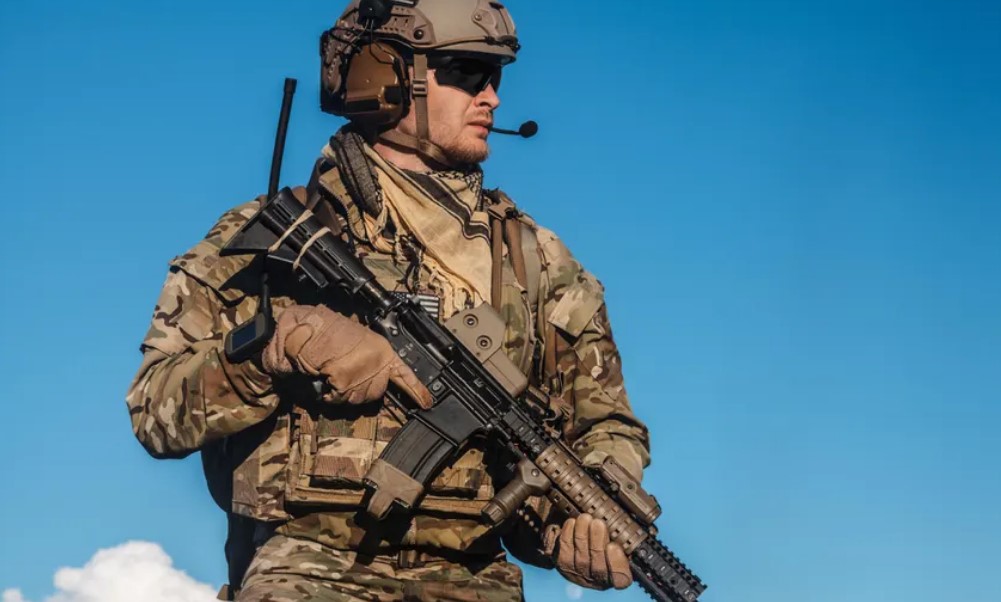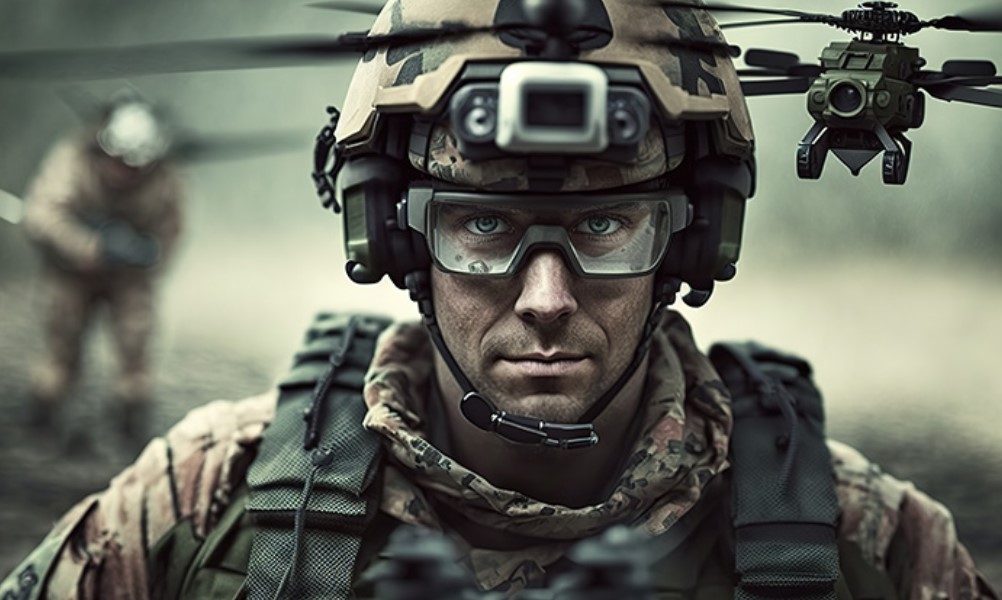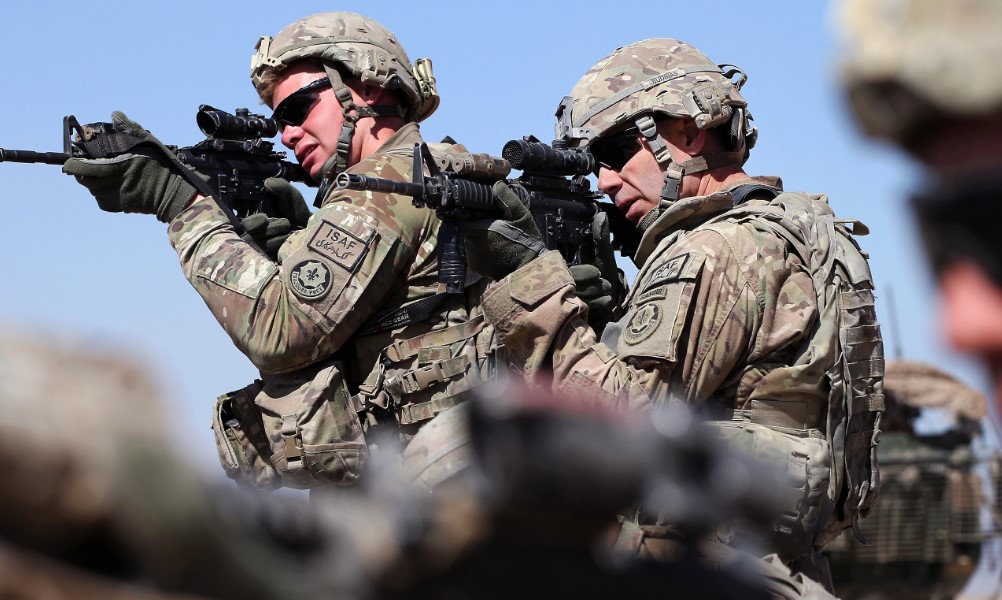Military power is a critical indicator of national strength, influence, and global reach. The armies of the world’s most powerful nations not only serve as protectors of their citizens but also as instruments of geopolitical strategy, ensuring that these countries maintain their influence on the global stage. In this article, we’ll analyze the top 5 strongest armies in the world, focusing on their military capabilities, strengths, technological advancements, and how they impact global security.
Why Is Military Strength Important?

Before diving into the specifics, it’s essential to understand why military strength matters on a global scale. Military power is the backbone of national security. A robust military:
- Deters external threats: Countries with strong militaries are less likely to be attacked by adversaries.
- Ensures internal stability: A well-equipped army can help maintain order during internal conflicts and natural disasters.
- Influences geopolitical dynamics: Militarily strong countries can shape regional and global policies.
- Boosts national pride and unity: Citizens often feel safer and more unified, knowing that their country can defend itself.
Things a Strong Armies Should Have

A strong army is more than just a large number of soldiers; it is a complex system that incorporates advanced technology, superior strategy, and logistical efficiency. Below are key elements that a strong army must possess to maintain dominance in modern warfare and global security.
1. Advanced Technology
Modern warfare is heavily reliant on technology, and a strong army must have access to cutting-edge equipment. This includes drones, advanced surveillance systems, cyber-warfare capabilities, and stealth technology. For example, drones allow armies to conduct surveillance, carry out precision strikes, and perform reconnaissance without risking human lives. Stealth technology, like the U.S. F-35 fighter jet, makes it harder for enemies to detect and counter air operations.
2. Highly Trained Personnel
Having a large army is beneficial, but without proper training, it becomes less effective. A strong army invests heavily in the continuous training of its soldiers, preparing them for different types of combat scenarios such as urban warfare, counterterrorism, and high-tech battlefield operations. Special forces, like Navy SEALs or the British SAS, demonstrate the importance of elite units that can operate in diverse and high-pressure environments.
3. Robust Logistics
Logistics are the backbone of any successful military operation. Armies must have efficient supply chains to transport weapons, ammunition, food, and medical supplies to their troops. A breakdown in logistics can lead to failure, even if the army has superior firepower. Countries like the U.S. have mastered military logistics, ensuring that their forces can be supplied anywhere in the world within hours.
4. Cyber Defense and Offense
In today’s interconnected world, cyber warfare is an essential component of military strength. A strong army must have the ability to both defend against cyberattacks and launch offensive operations. Cyber capabilities allow armies to disrupt enemy communications, disable critical infrastructure, and protect their own military networks from intrusion.
5. Strong Intelligence Networks
Intelligence is the key to winning wars before they begin. A strong army must have an intelligence network capable of gathering information on enemy movements, plans, and strategies. Military intelligence, such as the work done by agencies like the CIA or Mossad, is crucial for understanding threats and planning effective countermeasures.
Top 5 Strongest Armies in the World

Let’s explore the armies of the five most powerful nations in the world, analyzing their strengths, strategic advantages, and the technology that sets them apart.
1. United States Army
The United States maintains the most powerful and technologically advanced military force globally. The U.S. Army operates as part of the broader U.S. Department of Defense, with divisions specializing in land, sea, air, and space warfare.
Key Features:
- Technological Superiority: The U.S. Army is unmatched in its technological capabilities. It employs cutting-edge drones, stealth fighters like the F-35, advanced missile defense systems, and superior cyber-warfare capabilities.
- Global Presence: The U.S. has over 800 military bases around the world, enabling rapid response to international crises.
- Nuclear Deterrent: With one of the largest nuclear arsenals, the U.S. can deter large-scale wars.
- Personnel: Approximately 1.4 million active-duty personnel, with an additional 800,000 in reserves.
Detailed Benefits:
The U.S. Army’s technological edge allows it to dominate in various types of warfare, from air superiority to cyber defense. The global presence of American military bases means the U.S. can project power anywhere in the world within hours, which also helps in humanitarian missions and peacekeeping operations. With one of the most modern fleets of vehicles, aircraft, and weapons systems, the U.S. Army ensures that its forces are well-protected and highly effective in combat situations.
Real-World Military Products for Research:
- The Pentagon’s Brain: An Uncensored History of DARPA
This book delves into the innovations of DARPA (Defense Advanced Research Projects Agency), which has contributed significantly to the U.S. Army’s advanced technology. Buy here - Global Military Power Magazine
This monthly publication covers the U.S. military and other global military forces in great detail, with a focus on technological advancements. Subscribe here
2. Chinese People’s Liberation Army (PLA)
China has made significant strides in modernizing its military, positioning itself as a leading global power. The PLA is the largest standing army in the world, focusing heavily on developing advanced missile systems, cyber capabilities, and space warfare technologies.
Key Features:
- Largest Army by Personnel: With over 2 million active soldiers, China boasts the largest standing army in the world.
- Advanced Technology: China is rapidly catching up to the U.S. in terms of military technology. They have developed stealth fighter jets like the J-20, hypersonic missiles, and advanced space warfare capabilities.
- Cyber Warfare: China has invested heavily in cyber defense and offense, posing significant threats in this domain.
- Regional Dominance: China has focused its military expansion in the Asia-Pacific region, where it aims to assert dominance.
Detailed Benefits:
The size of China’s army allows it to conduct prolonged operations with substantial manpower. China’s investment in missile and naval technology ensures it can defend its borders and project power in critical areas like the South China Sea. China’s growing capabilities in space and cyber warfare are setting the stage for the future of global conflicts, where control over communication satellites and critical infrastructure will be paramount.
Real-World Military Products for Research:
- China’s Military Modernization: Building for Regional and Global Reach
This book provides an in-depth analysis of China’s military advancements and strategic goals. Buy here - China Military Online Subscription
A subscription-based service that offers news, updates, and analysis on the Chinese military. Subscribe here
3. Russian Armed Forces
Despite budget constraints compared to the U.S. and China, Russia maintains a powerful military with a heavy focus on nuclear deterrence, hybrid warfare, and advanced missile systems. The Russian military has demonstrated its capabilities in conflicts like Ukraine and Syria.
Key Features:
- Nuclear Powerhouse: Russia has the largest stockpile of nuclear weapons, a crucial component of its military strategy.
- Cyber and Hybrid Warfare: Russia is known for using unconventional methods like cyber-attacks and disinformation campaigns to destabilize opponents.
- Advanced Tanks and Artillery: The Russian army has developed modern tank systems like the T-14 Armata, which is regarded as one of the most advanced in the world.
Detailed Benefits:
Russia’s military power is concentrated on hybrid and asymmetric warfare strategies, making them highly effective in modern-day conflicts. Their nuclear arsenal serves as a deterrent, and their cyber capabilities allow them to disrupt foreign governments and influence global events without direct military engagement.
Real-World Military Products for Research:
- Russia’s Hybrid Warfare: Resurgence and Expansion
This book explores the unique strategies employed by Russia to maintain its influence and power globally. Buy here - Russian Defense Weekly
A comprehensive weekly publication that covers Russian military advancements and geopolitical strategies. Subscribe here
4. Indian Armed Forces
India is rapidly modernizing its military, focusing on building indigenous defense capabilities. The Indian Armed Forces have a diverse range of operations, from high-altitude warfare in the Himalayas to counterterrorism missions.
Key Features:
- Manpower: India has a large military force with over 1.4 million active personnel.
- Indigenous Production: India has ramped up domestic defense production, reducing its reliance on imports. This includes developing tanks, fighter jets, and missile systems.
- Nuclear Triad: India has land, sea, and air-based nuclear delivery systems, allowing for second-strike capabilities.
Detailed Benefits:
India’s geographical location gives it strategic importance in the South Asia region. The country’s investment in defense technology has strengthened its global standing, and its ability to produce military equipment domestically ensures economic growth while enhancing national security.
Real-World Military Products for Research:
- India’s Rise as a Global Military Power
This publication examines India’s growing role in global military affairs. Buy here - Defense India Weekly
This magazine provides insights into India’s defense policies and technological advancements. Subscribe here
5. French Armed Forces
France is a leading military power in Europe, with capabilities in nuclear deterrence, rapid deployment, and peacekeeping. The French military is involved in various operations across Africa and the Middle East.
Key Features:
- Nuclear Deterrence: France maintains a robust nuclear deterrent with its submarine-launched ballistic missiles.
- Rapid Deployment: France can quickly mobilize forces due to its extensive network of overseas bases and alliances with NATO and the EU.
- Specialized Forces: French military units are known for their specialized training in counterterrorism and special operations.
Detailed Benefits:
France’s ability to deploy its military quickly allows it to respond to crises across the world. Their focus on special operations and counterterrorism makes them a key player in global security. France’s strong alliances with NATO ensure it can coordinate effectively with other European and North American military forces.
Real-World Military Products for Research:
- French Military Power and Strategy
An in-depth look at France’s military policies and strategic goals. Buy here - Defense France Weekly
A subscription service that provides updates on French military activities. Subscribe here
Comparison Table of the Top 5 Strongest Armies
| Country | Active Personnel | Military Budget (USD) | Key Features | Nuclear Arsenal | Technological Edge | Global Reach |
|---|---|---|---|---|---|---|
| United States | 1.4 million | $800 billion | Drones, stealth aircraft, cyber warfare | Yes | Advanced AI, drones, missiles | Extensive global network |
| China (PLA) | 2 million | $250 billion | Hypersonic missiles, AI, largest manpower | Yes | Stealth tech, missile systems | Dominant in Asia-Pacific |
| Russia | 900,000 | $60 billion | Largest nuclear arsenal, cyber warfare | Yes | Cyber warfare, nuclear arms | Dominant in Europe, Asia |
| India | 1.4 million | $75 billion | Indigenous tech, nuclear triad | Yes | Developing tech, submarines | Regional influence in Asia |
| France | 270,000 | $50 billion | Rapid deployment, nuclear deterrence | Yes | Counterterrorism, submarines | Global operations (Africa) |
Benefits of Understanding Global Military Power
1. Strategic Awareness
Understanding the military capabilities of the world’s leading nations provides insights into global security. It helps individuals and organizations make informed decisions about investment, travel, and even international business partnerships in regions with fluctuating security situations.
2. Economic Implications
Countries with strong militaries protect not only their borders but also their economic interests, trade routes, and allies. Military power often influences trade negotiations, the security of supply chains, and access to critical resources.
3. Crisis Response
Militarily strong nations often lead global peacekeeping efforts and humanitarian missions. During crises, whether they be natural disasters, terrorist attacks, or large-scale conflicts, these nations can deploy forces rapidly to help restore order.
Where to Learn More and Buy Related Resources
Books and Subscriptions:
- Global Military Power Magazine – A detailed monthly publication analyzing military strengths and developments. Subscribe here
- The Pentagon’s Brain – A book delving into the U.S. military’s cutting-edge technologies. Buy here
Military Databases:
- Global Firepower Database – Provides up-to-date rankings of military strengths across the world. Visit the website
Frequently Asked Questions (FAQs)
1. Which is the most powerful military in the world?
The United States military is the most powerful, thanks to its advanced technology, vast budget, and global presence.
2. Why is China’s army considered so powerful?
China’s military is the largest by manpower and has made significant strides in technology, especially in missile systems and cyber warfare.
3. How does Russia maintain military power with a smaller budget?
Russia focuses on nuclear deterrence and cyber warfare, which allow it to maintain global influence despite a smaller defense budget.
4. What role does the French military play in global security?
The French military is actively involved in peacekeeping missions and counterterrorism operations, particularly in Africa and the Middle East.
5. How can I learn more about global military power rankings?
You can visit defense intelligence databases like Global Firepower or subscribe to military-focused publications such as Jane’s Defence Weekly.